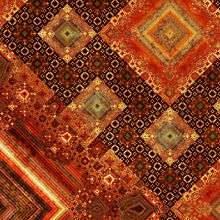De Re Aedificatoria

De re aedificatoria (English: On the Art of Building) is a classic architectural treatise written by Leon Battista Alberti between 1443 and 1452.[1] Although largely dependent on Vitruvius's De architectura, it was the first theoretical book on the subject written in the Italian Renaissance, and in 1485 it became the first printed book on architecture. It was followed in 1486 with the first printed edition of Vitruvius.
Book
_(14758258226).jpg)
Alberti's Ten Books consciously echoes Vitruvius's writing, but Alberti also adopts a critical attitude toward his predecessor. In his discussion, Alberti includes a wide variety of literary sources, including Plato and Aristotle, presenting a concise version of the sociology of architecture. De re aedificatoria is subdivided into ten books and includes:
- Book One: Lineaments
- Book Two: Materials
- Book Three: Construction
- Book Four: Public Works
- Book Five: Works of Individuals
- Book Six: Ornament
- Book Seven: Ornament to Sacred Buildings
- Book Eight: Ornament to Public Secular Buildings
- Book Nine: Ornament to Private Buildings
- Book Ten: Restoration of Buildings
In his survey of desirable floor plans for sacred buildings— "temples" in his phrase—Alberti begins with the ideal form of the circle, which is expressed in numerous examples of Nature. Nine ideal centrally-planned geometrical shapes are recommended for churches; besides the circle he lists the square, the hexagon, octagon, decagon and dodecagon, all derived from the circle, and, derived from the square, rectangles that exhibit the square and a half, square and a third and double square, all of which have enharmonic parallels in music. Chapels add small geometric figures to the basic circles and polygons to give a great variety of floor plans, in which each geometrical figure retains its clear unity and simple ratios that bind all elements of the plans and elevations into a harmonic unity.
De re aedificatoria remained the classic treatise on architecture from the 16th until the 18th century.
See also
Notes
- ↑ Cecil Grayson, in Kunstkronik 213 (1960:359ff, and Münchener Jahrbuch der Bildenden Kunst 11 (1960), demonstrated that the bulk of the composition was carried out between these dates.
References
- Alberti, Leon Battista. De re aedificatoria. On the art of building in ten books. (translated by Joseph Rykwert, Robert Tavernor and Neil Leach). Cambridge, Mass.: MIT Press, 1988.
- Grafton, Anthony. Leon Battista Alberti: master builder of the Italian Renaissance. New York: Hill and Wang, 2000.
- Tavernor, Robert. On Alberti and the Art of Building. New Haven and London: Yale University Press, 1998.
- Wittkower, Rudolph. Architectural Principles in the Age of Humanism (London: Tiranti) 1962; (New York: Random House) 1965. Part I.i "Alberti's Program of the Ideal Church"; part ii "Alberti's Approach to Antiquity in Architecture"; part IV.iii "Alberti's 'Generation' of Ratios".
- Fontana-Giusti, Gordana. 'Walling and the city: the effects of walls and walling within the city space', The Journal of Architecture pp 309-45 Volume 16, Issue 3, London & New York: Routledge, 2011 http://www.tandfonline.com/toc/rjar20/16/3#.UlGA8ChTNUQ
External links
- Ten Books on Architecture by Leone Battista Alberti
- Latin, French and Italian editions of De re aedificatoria
